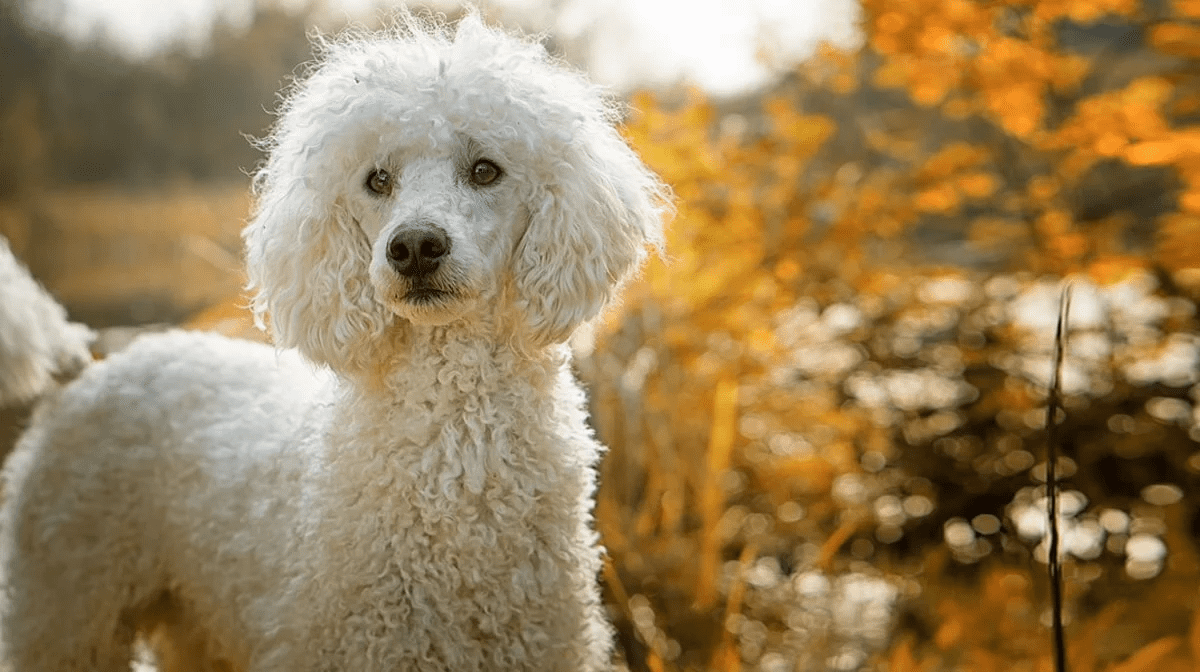Dogs
Hypoallergenic Dogs: The Best Dog Breeds for People with Allergies
HYPOALLERGENIC DOG BREEDS
Do you suffer from dog allergies? If so, you know that it can be difficult to find a pet that won’t aggravate your condition.
Many people with allergies choose to avoid dogs altogether, but this doesn’t have to be the case!
There are many hypoallergenic dog breeds that are perfect for people with allergies.
In this blog post, we will discuss some of the best hypoallergenic dog breeds for people with allergies.
Allergy Sufferers
Common symptoms of an allergic reaction to dogs include:
- Sneezing
- Coughing
- Nasal congestion or runny nose
- Irritated eyes
- Itchy skin and hives
Most people with a dog allergy will only have very mild symptoms. Symptoms are very similar to the common cold or hay fever so they can be difficult to diagnose.
If your symptoms persist for two weeks or more, it may be allergies.
Long-term or frequent exposure to the allergen can cause ongoing airway inflammation and various health problems.
For some people, it can be more severe and they will require emergency medical attention.
Serious allergy symptoms include chest pain and difficulty breathing. If you have asthma, you are more likely to experience severe symptoms.
Allergies Explained
Allergies occur when the body’s immune system reacts to a foreign substance that it incorrectly believes is harmful.
When you come into contact with an allergen, your immune system will release histamines in an attempt to fight it off.
These histamines will cause the symptoms that we associate with allergies.
An allergen can be something that you breathe in, eat or touch. There are many different types of allergens.
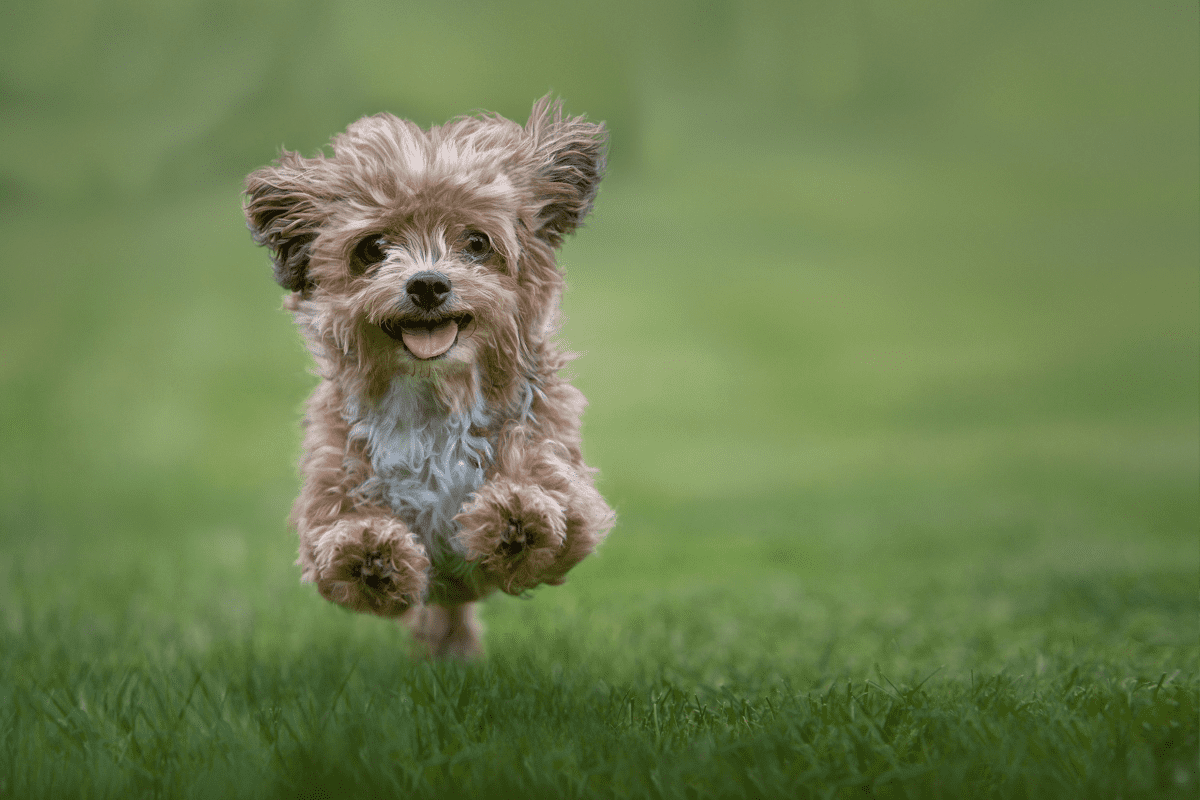
Common allergens include pollen, dust mites, mold and food.
When people suffer from allergies to dogs, it is commonly believed they are reacting to the dog’s fur.
In reality, they are reacting to a protein that is in the dog’s saliva. This protein is transferred onto the dog’s dander.
When you come into contact with the dander or saliva directly, you may experience a reaction.
Dander can be airborne and breathed in. It can also land on your furniture and clothes and stay there for a long time.
If you are exposed to dogs from an early age, you are less likely to develop a dog allergy.
Minimising an Allergic Reaction
Ideally, those with dog allergies should only spend time with hypoallergenic breeds. However, sometimes this cannot be avoided.
There are a few things allergy sufferers can do to minimize their allergic reaction to dogs:
- Keep your dog outdoors as much as possible. When indoors, keep the dog away from your bedroom or any room you spend a lot of time in. Also keep your dog off any rugs or carpet as this is harder to remove their dander from.
- Groom your dog regularly. This includes daily brushing and bathing them every 6 weeks. If possible, keep their hair trimmed short.
- Clean your house regularly to remove dander and fur. This will include shampooing any rugs or carpet.
- After touching your dog, avoid touching your face. Wash your hands thoroughly.
- Use an air filter in your home to remove dander from the air.
- If you experience a mild allergic reaction, take antihistamines to reduce symptoms.
Are There Really Hypoallergenic Dogs?
There is no such thing as a completely hypoallergenic dog. All dog breeds produce saliva and dander which can cause an allergic reaction in some people.
However, there are some breeds of dogs that are classified as ‘hypoallergenic’ because they are less likely to cause an allergic reaction.
This is because they shed less dog hair and therefore less dander. Typically only people with very severe allergies will react to these breeds.
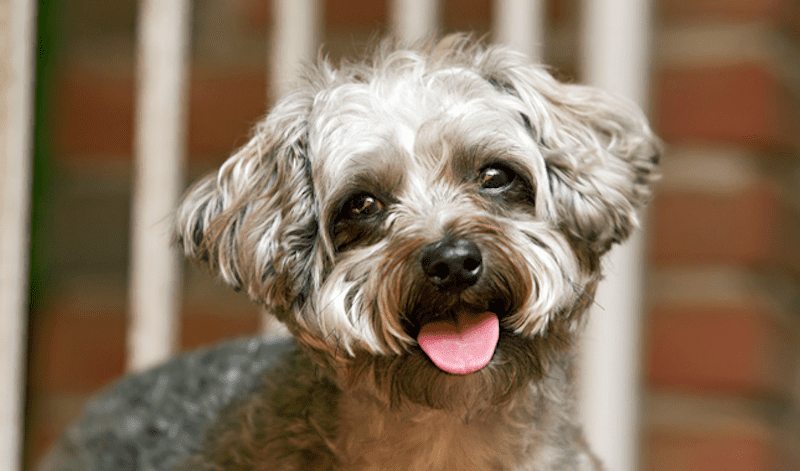
If you are considering getting a dog and you suffer from allergies, it is important to do your research first.
Talk to other allergy sufferers who have owned dogs that don’t shed and see if they have had any success.
It is also important to visit with the dog before you make your final decision.
Spending time around the dog will help you to see if you experience an allergic reaction.
Hypoallergenic Dog Breeds
If someone in your household suffers from mild allergies, you can still get a pet dog. But you will need to choose a hypoallergenic breed.
Luckily, there are lots of great hypoallergenic dog breeds to choose from!
Best Hypoallergenic Dogs
These breeds are the most hypoallergenic and therefore the best companions for allergy sufferers. They shed minimal hair and dander.
Small Dogs
Small dogs are becoming increasingly popular as companions for older people, apartment dwellers and families with young children.
Small breeds are a great choice for allergy sufferers as they typically lose less dander than large dogs.
- Bichon Frise
- Border Terrier
- Chinese Crested
- Poodle (Toy)
- Scottish Terrier
- Shih Tzu
- West Highland White Terriers
- Yorkshire Terrier
Medium Sized Dogs
Mid-sized dogs are not too big and not too small. They are the perfect sized pups for any environment!
- American Hairless Terrier
- Irish Water Spaniel
- Kerry Blue Terrier
- Poodle (Miniature)
- Portuguese Water Dog
- Soft Coated Wheaten Terrier
- Wire Fox Terrier
Large Dogs
Australians have long had a love for big dogs. They have big personalities and big hearts.
Generally, a larger dog means more fur being shed. But not these breeds!
Terrier Breeds
Terriers are some of the most popular dog breeds in Australia. And there are so many terriers to choose from!
They vary a lot in size and appearance but share many features and were all originally bred to hunt.
Not all terriers are hypoallergenic. But these ones are…
- Border Terrier
- American Hairless Terrier
- Kerry Blue Terrier
- Scottish Terrier
- Soft Coated Wheaten Terrier
- West Highland White Terriers
- Wire Fox Terrier
- Yorkshire Terrier
Family Dogs
These hypoallergenic pups are family favourites for a reason – these breeds have great temperaments, a gentle nature and are great with children.
- Bichon Frise
- Border Terrier
- Poodle (all size varieties)
- Shih Tzu
- Scottish Terrier
- West Highland White Terriers
- Yorkshire Terrier
Athletic Dogs
These hypoallergenic dog breeds are high energy. They are ideal for an active family who love to go for walks and adventure outside.
You will need to commit to exercising them for a minimum of 60 minutes every day.
- Afghan Hound
- Giant Schnauzer
- Irish Water Spaniel
- Poodle (all size varieties)
- Portuguese Water Dog
- Wire Fox Terrier
Dogs That Don’t Shed – List of Breeds
Afghan Hound
For a large dog, Afghan Hounds are very elegant. They have a long, slender figure and a silky, shiny coat.
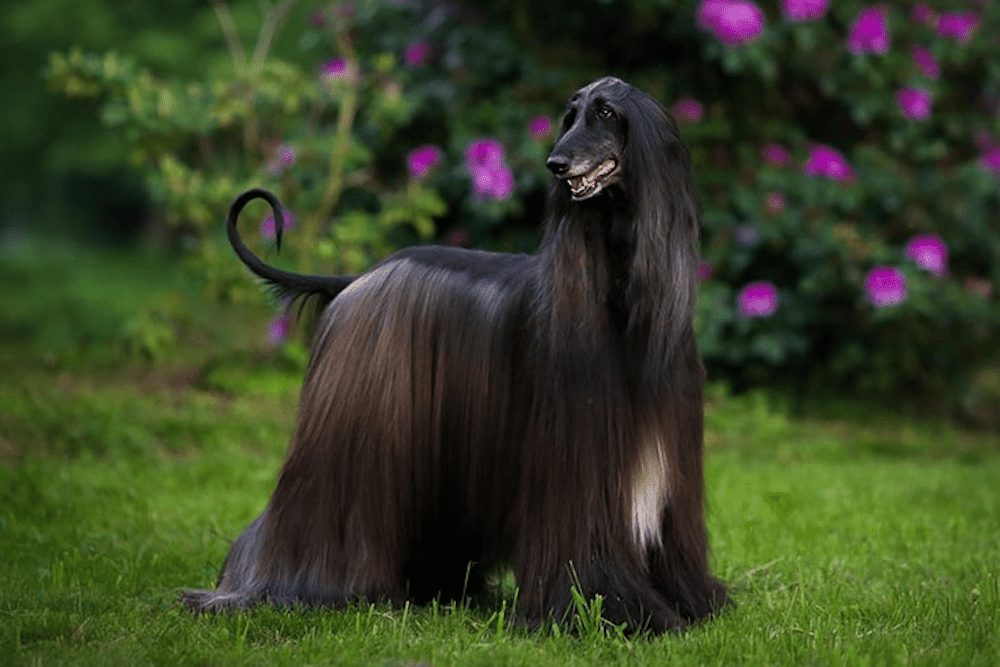
They are naturally shy but once they come out of their shell they love to play. They are high energy dogs and need at least 60 minutes of exercise daily.
While their non shedding coat is traditionally kept floor length, allergy sufferers should keep their Afghan Hound’s coat trimmed short. They also drool a minimal amount.
American Hairless Terrier
The American Hairless Terrier is lively, playful and intelligent. Their exercise needs are moderate.
They are completely hairless so a great choice for people with pet allergies. They still produce dander so may create a reaction in people with severe allergies.
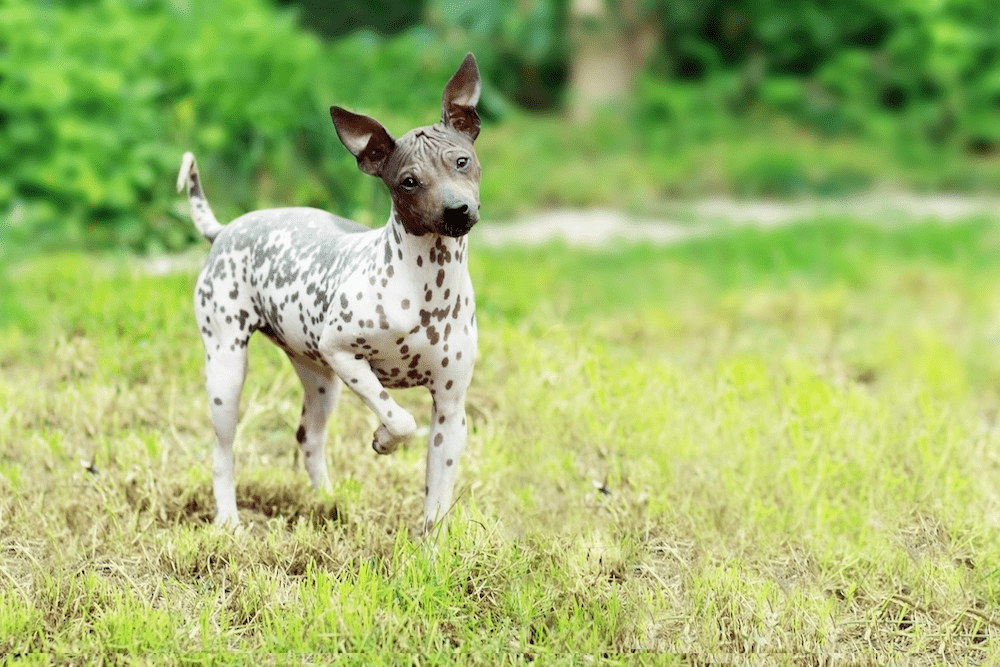
Owners will need to be careful exposing this dog to cold weather. They don’t have fur to keep them warm and will need to wear a jacket outside during winter.
They are also prone to sunburn in summer so invest in some doggy sunscreen. Their skin naturally produces extra oil so they will need to be bathed more often than the average dog.
Bichon Frise
Bichon Frise are adorable, little balls of fluff! They are a highly affectionate breed and make ideal lap dogs.
They don’t bark as much as other small breeds so are a good choice for older people or families who live in apartments.
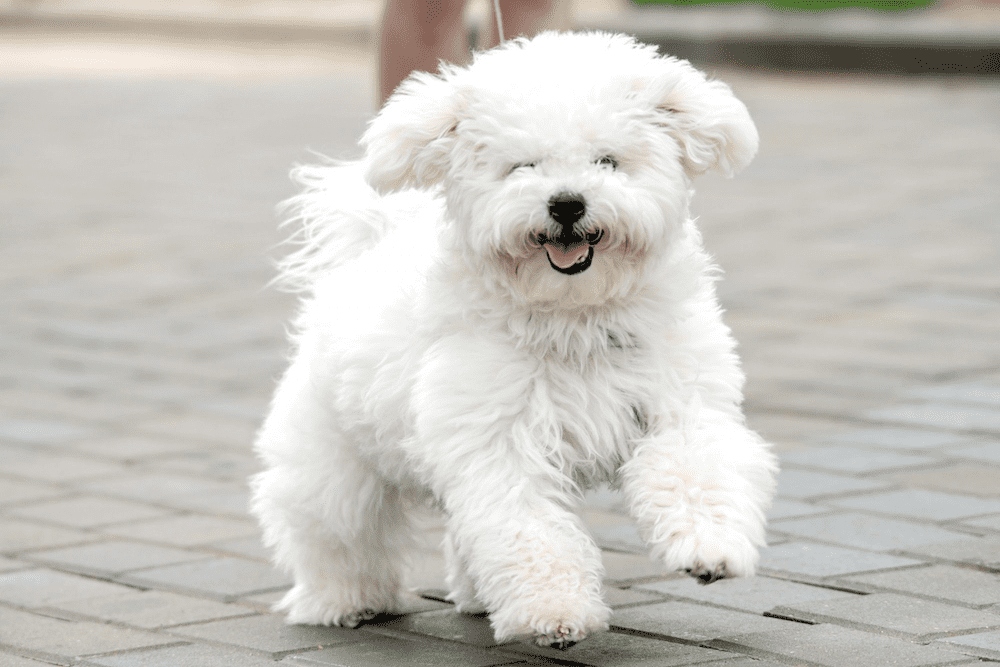
Despite their fuzzy fur, these companion pets have a hypoallergenic coat. They do require regular grooming including daily brushing.
Border Terrier
Border Terriers are intelligent and affectionate.
They are very loyal and the ideal family dog. They love to play but also to chill out on the couch with their humans.
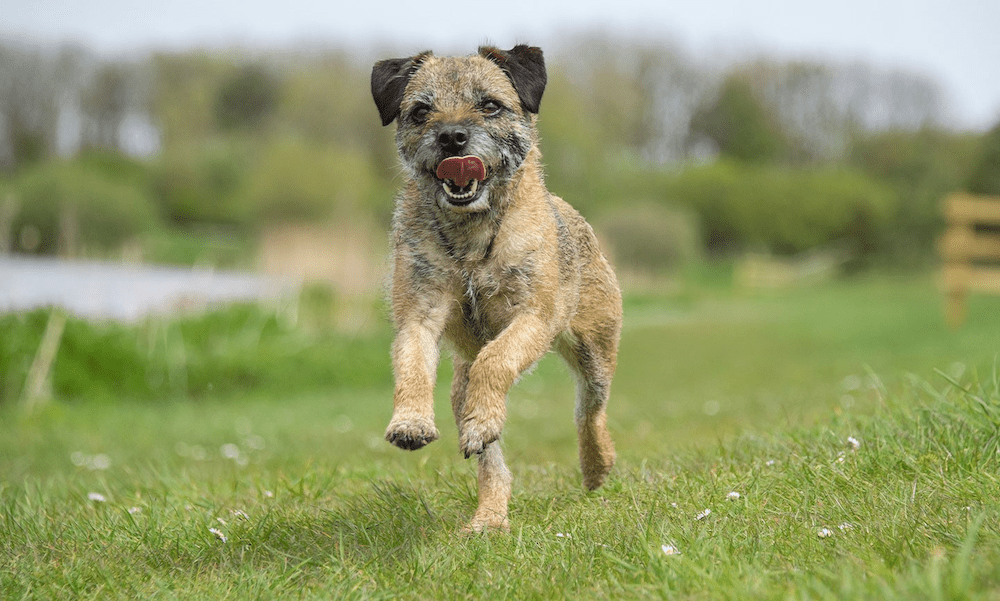
They have a short, wiry coat which sheds very little hair. They need minimal grooming.
It is recommended you brush them regularly to remove any loose fur and trim the fur around their face to stay short.
Chinese Crested
Chinese Crested are elegant, lively and bond strongly with their human owners.
There are two varieties – the Hairless (which only has hair on the head, feet and tail) and the Powder-Puff (which has a fine, silky coat all over).
Only the Hairless variety are classed as hypoallergenic dogs.
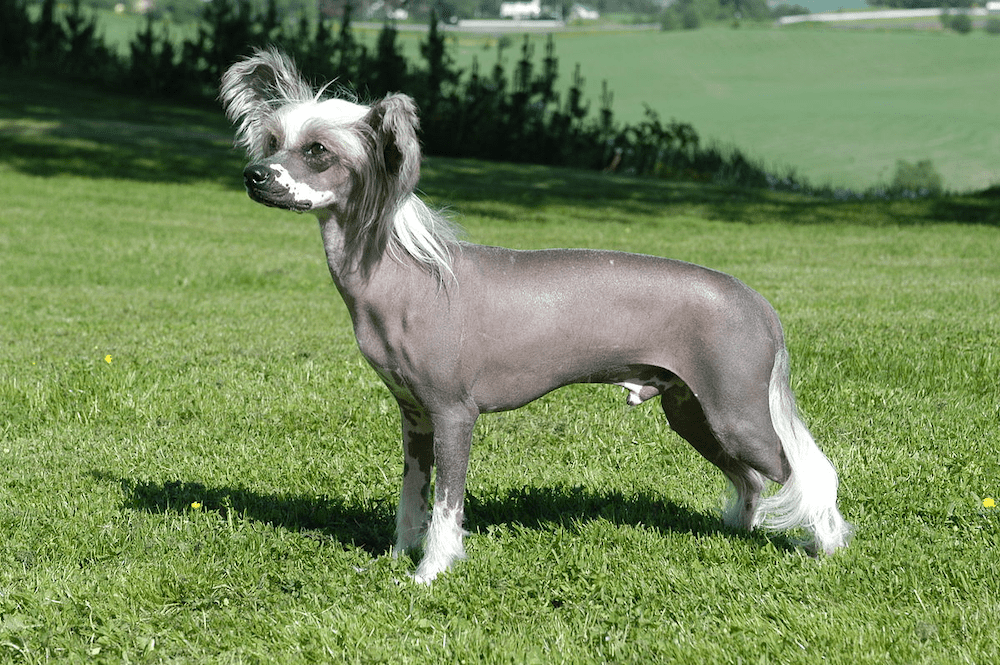
Their minimal amount of hair means they shed very little.
They can still produce a reaction in people with severe allergies as the dog will still produce dander.
It is recommended you bathe them every couple of weeks to remove dander and natural oils on their skin.
Giant Schnauzer
Giant Schnauzers are the largest of the three Schnauzer dog breeds.
They are extremely intelligent. This means they train well but also require a lot of mental stimulation and exercise.
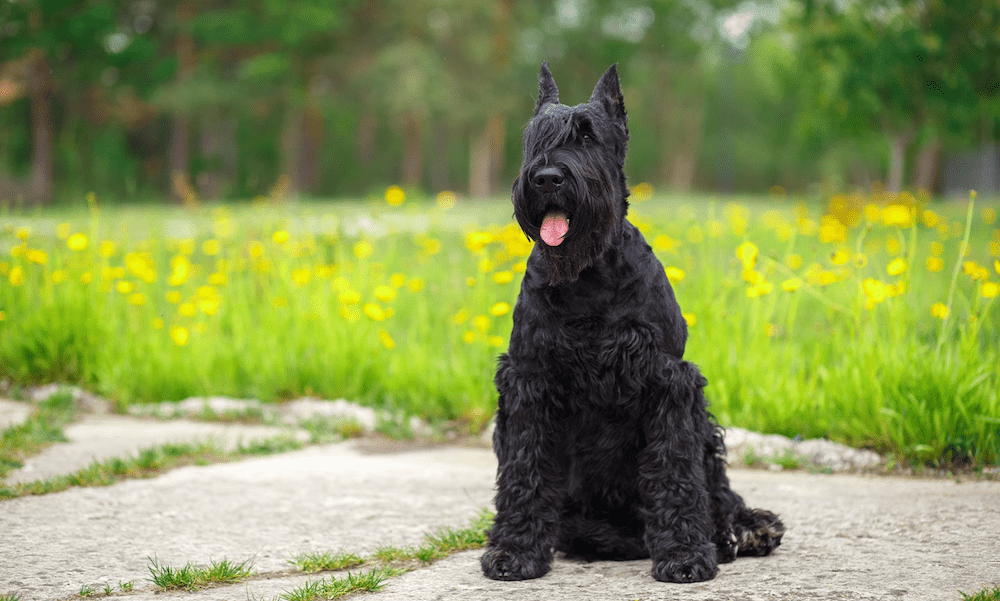
They are therefore not recommended for first time dog owners or families with very young children.
Giant Schnauzers are one of the largest non shedding dogs. They shed very little hair and they also don’t get too smelly.
Irish Water Spaniel
Irish Water Spaniels have a thick, curly coat that only comes in reddish brown. At first glance, you may assume they are a Poodle.
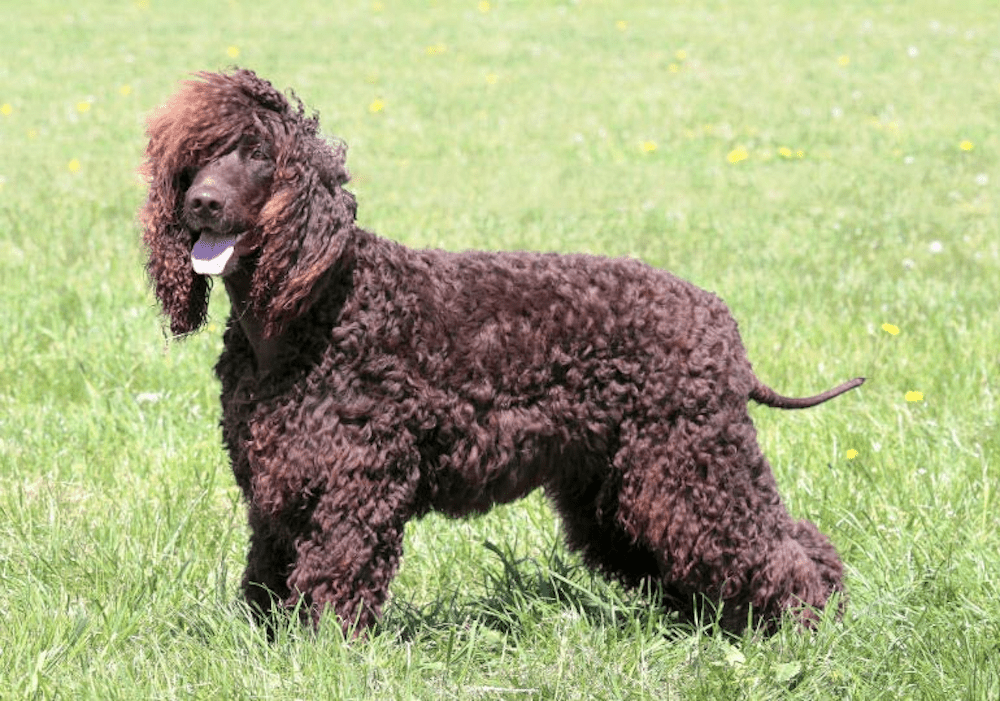
This member of the spaniel family is eager to please and high energy, making them suitable for obedience and agility competitions.
They are great swimmers and love to play in the water.
The Irish Water Spaniel coat is low maintenance and barely sheds at all. Brush them at least once per week at home.
Kerry Blue Terrier
Kerry Blue Terriers originated in Ireland and are sometimes known as the Irish Blue Terrier. They are rarely seen in Australia.
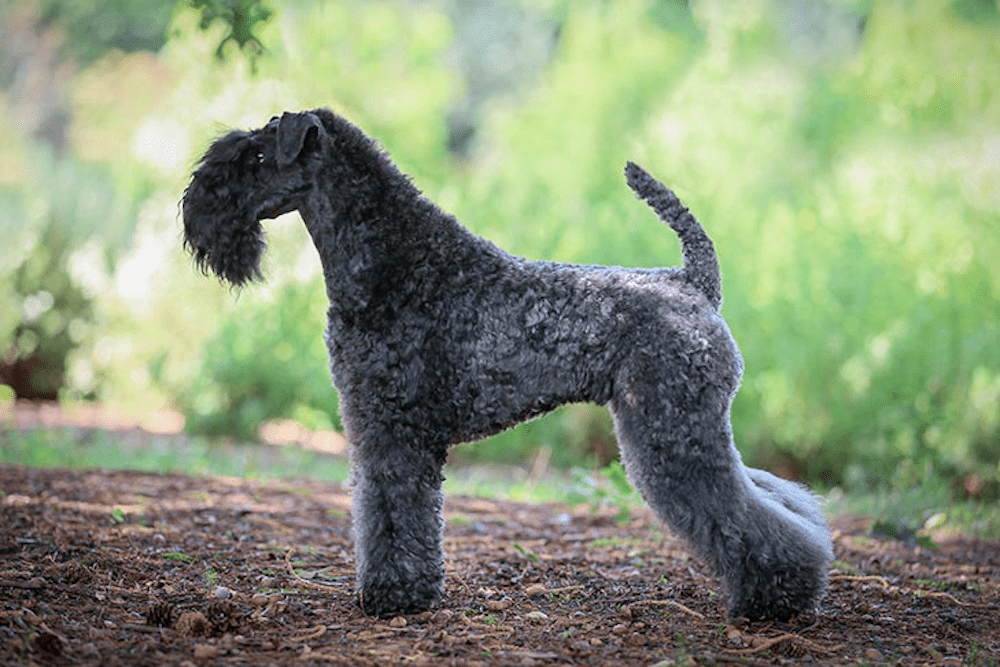
Similar to other breeds in the terrier family, they have a square head and narrow yet muscular body.
While many terriers have a double coat, this hypoallergenic dog breed has a single coat that barely sheds.
Poodle
There are three size varieties of Poodle – toy, miniature and standard.
The Poodle is known for its happy-go-lucky personality. They are always wagging their tail and eager to meet new friends.
They are also known for their high levels of intelligence.
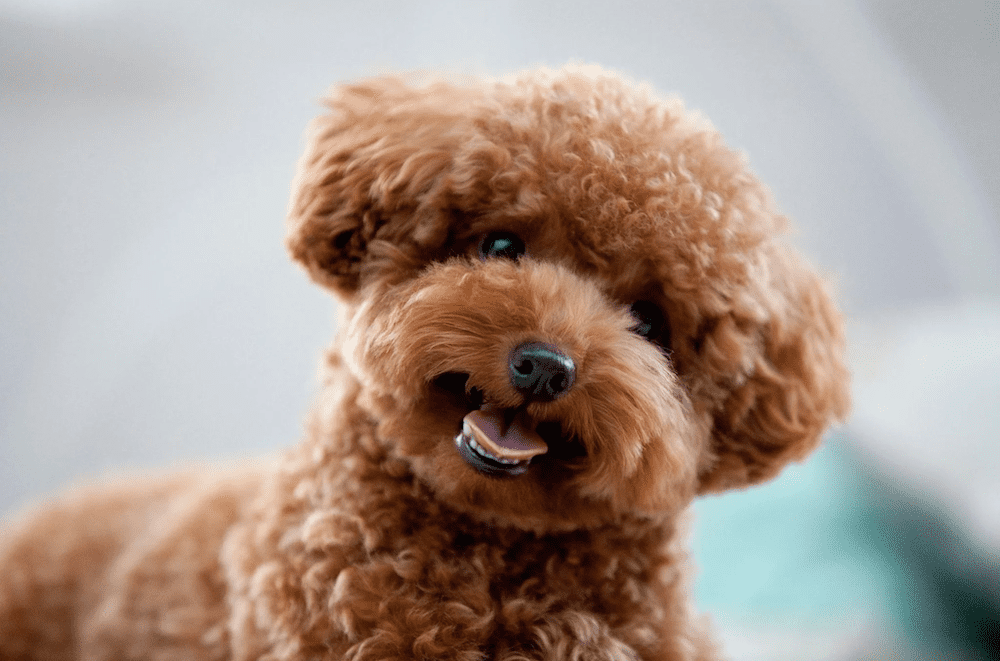
They are a popular choice for allergy sufferers as Poodles shed almost no hair. Because of this, many Poodle hybrid breeds now exist.
For example, a Labrador Retriever is not hypoallergenic.
But cross breed it with a Poodle and your Labradoodle puppies will be allergy friendly.
Portuguese Water Dog
Portuguese Water Dogs are happy, energetic and stubborn. They love to swim and run around outside.
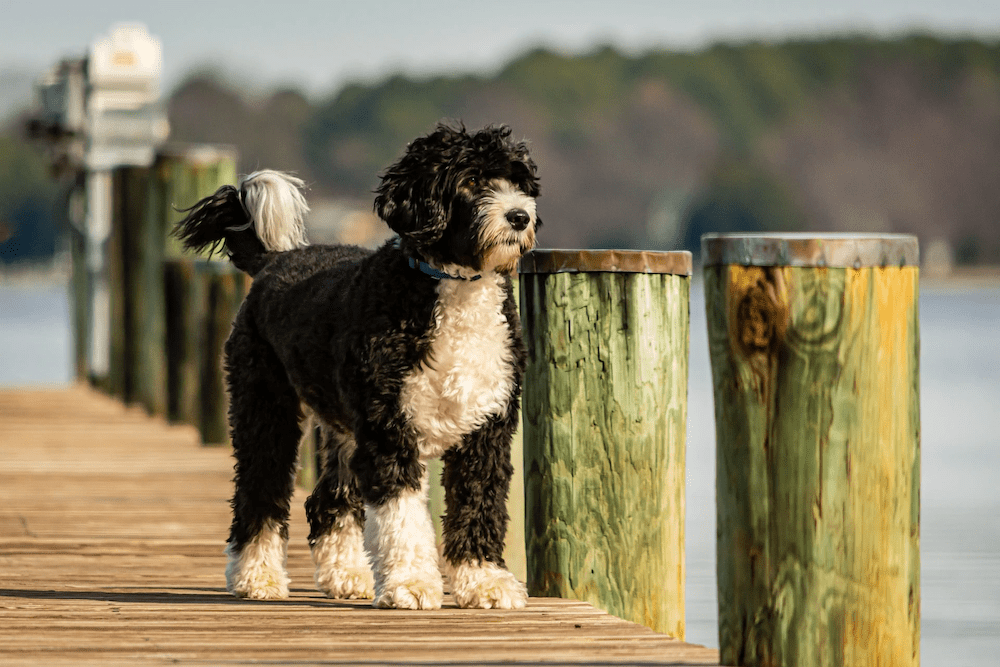
They look similar to a Poodle with thick, curly fur. They also share the Poodle’s intelligence and adaptability.
Their tightly curled coat is low shedding, making them ideal for people with mild allergies.
Scottish Terrier
Affectionately known as a ‘Scottie Dog’, Scottish Terriers are small, energetic and feisty.
They are a confident watch dog and therefore prone to barking. However, they are too friendly and small to make suitable guard dogs.
They love humans but most won’t be happy in the company of other dogs or pets.
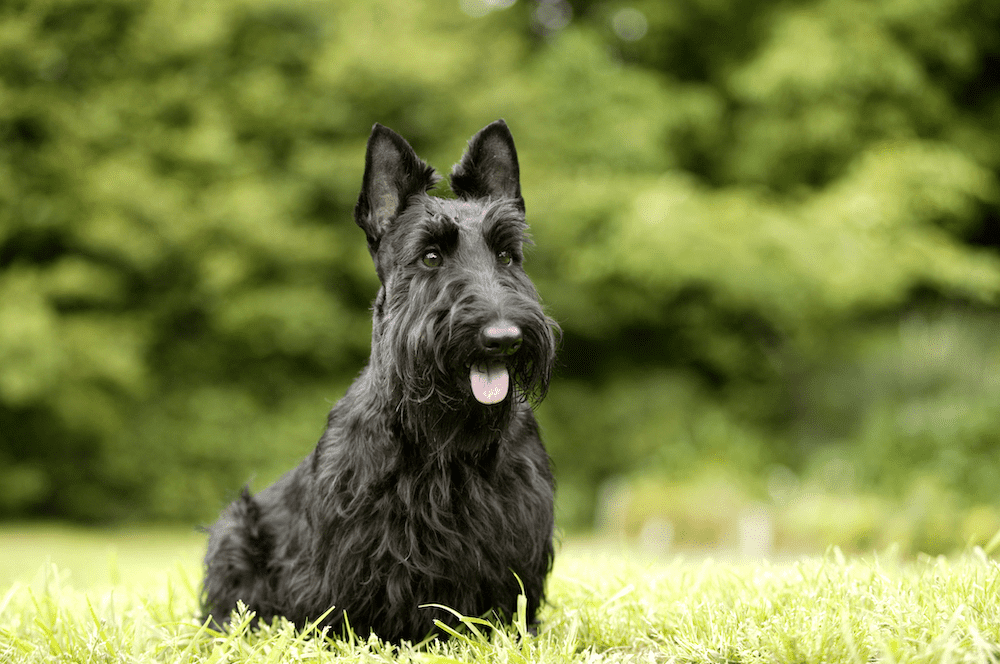
Scotties shed minimal hair so are allergy friendly.
Regular brushing will remove loose dog hair and minimise the amount floating around in your home.
Shih Tzu
Shih Tzus are friendly, little lap dogs. They love spending time with their humans and make great pets for older people.
They were originally bred in Tibet as a royal dog. They were known as “lion dogs” because of their short snout and big, round eyes.
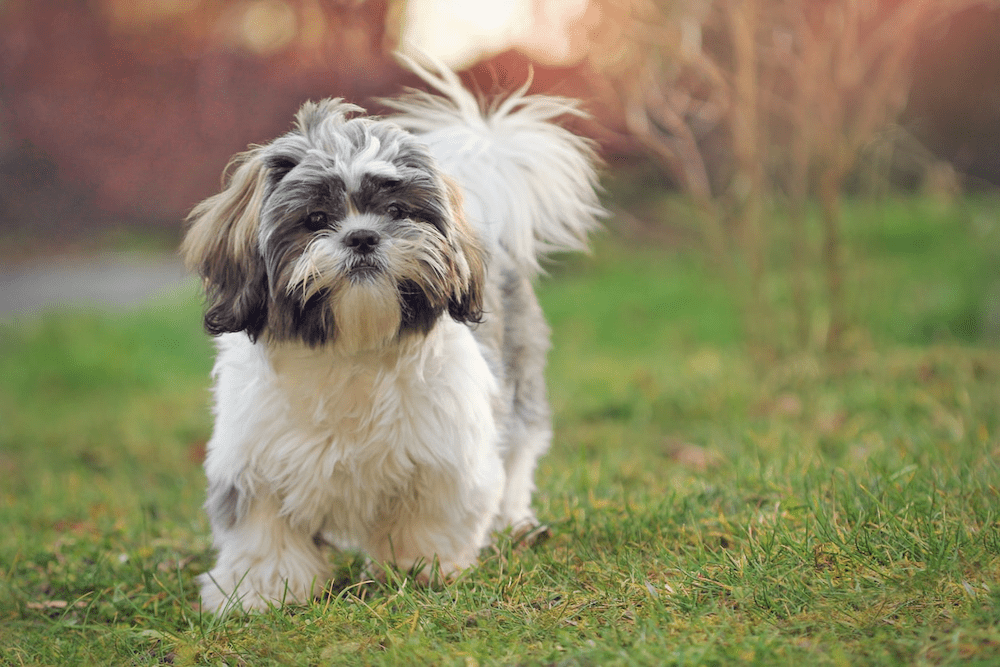
The Shih Tzu coat is classed as hypoallergenic as these dogs shed very little.
They traditionally have their fur kept very long however we recommend allergy sufferers keep their fur trimmed short.
Soft Coated Wheaten Terrier
Dog lovers celebrate the Wheaten Terrier for their playful and friendly nature.
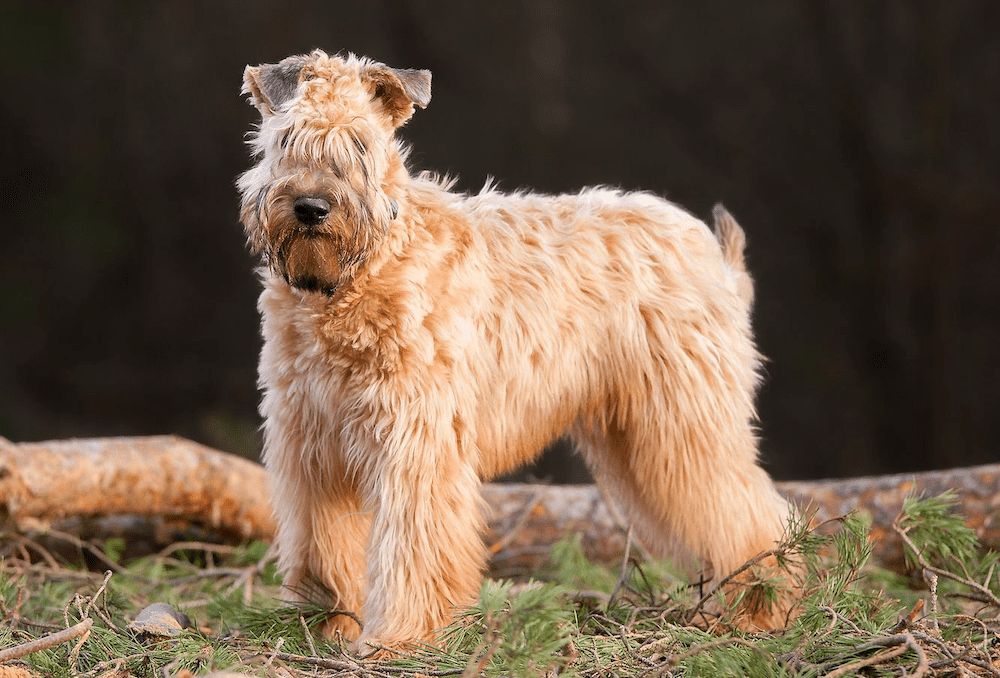
If you are looking for dogs that don’t shed, check out the Wheaten Terrier!
These popular hypoallergenic dogs shed very little pet hair and don’t drool much.
West Highland White Terriers
The West Highland White Terrier, also known as the ‘Westie’, is originally from Scotland. They are small, friendly and playful.
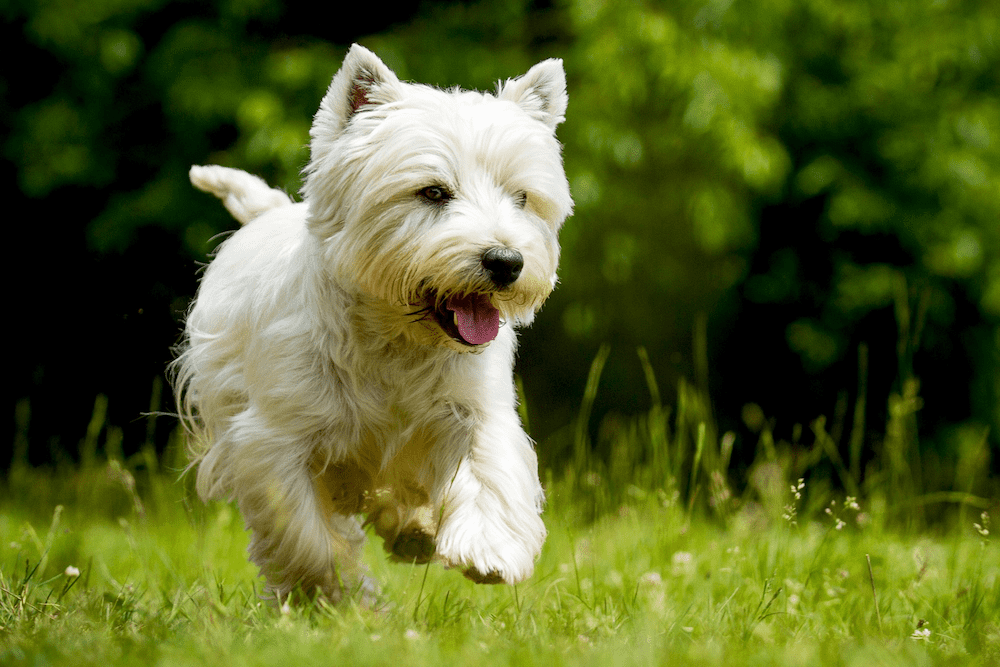
Despite their tiny size, they are full of energy and love nothing more than playing fetch outside with their favourite toy.
They are not suitable for households with small pets (such as rabbits) as your Westie may try and hunt them.
Westies are one of the most hypoallergenic dogs.
They produce minimal dander and most mild allergy sufferers report they do not have a reaction to them.
Wire Fox Terrier
Wire Fox Terriers are friendly, outgoing and intelligent. They are also known as the Wirehaired Terrier.
They are high energy, meaning they will need daily exercise and a dog owner who is dedicated to training them properly.
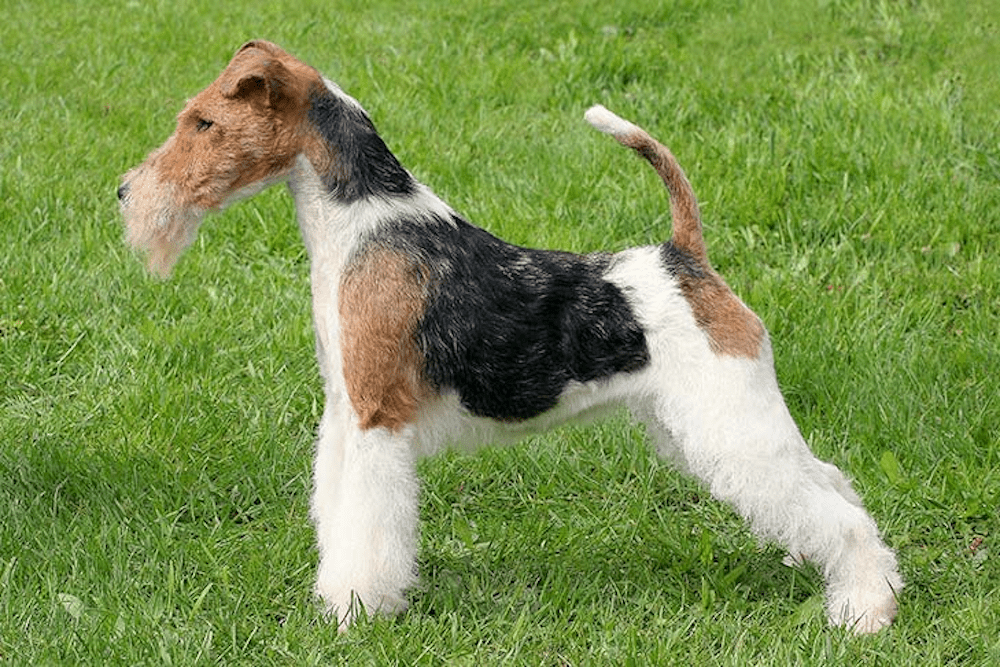
This dog breed has a wiry double coat that barely sheds. Keep it trimmed short.
They also don’t drool much, making them a great choice for allergy suffers.
Yorkshire Terrier
Lovingly known as the Yorkie, the Yorkshire Terrier is one of the smallest dogs that don’t shed. They are affectionate and playful.
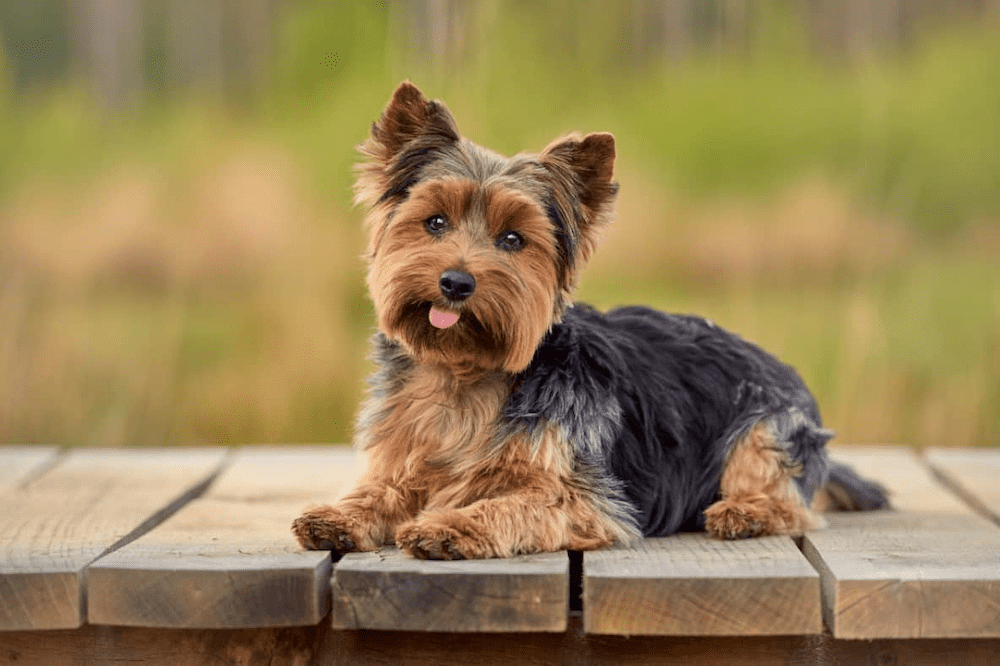
Their tiny size means they aren’t suitable for families with young children. They can easily be injured from rough handling or play.
People with pet allergies should keep their fur short and tidy. Regular brushing will help to remove loose fur.
References
https://www.mayoclinic.org/diseases-conditions/pet-allergy/expert-answers/hypoallergenic-dog-breeds/faq-20058425



